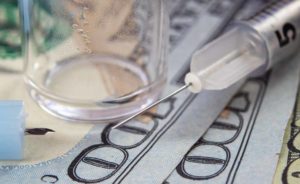by Suzanne Potter
California News Service
Some local colleges and universities in Southern California are turning to data analytics to streamline their programs, so students can transfer more easily from two- to four-year schools.
The Transfer GPS software is being used at two community colleges, Chaffey College in Rancho Cucamonga and San Bernardino Valley College, to help students who want to transfer to Cal State San Bernardino and not lose credit for the coursework they’ve already done.
Carlos Ayala, president and CEO of the nonprofit Growing Inland Achievement, said Transfer GPS helps schools troubleshoot.
“You’re able to actually visualize where students are ‘stopping out’ of particular programs,” Ayala pointed out. “And so then, faculty can make adjustments so that it’s easier for students to flow through the program.”
The program is funded by the College Futures Foundation and is a collaboration between the John N. Gardner Institute, Growing Inland Achievement, and the three schools. Growing Inland Achievement released a study on why students drop out, and found the top four reasons include financial struggles, confusing pathways to success, lack of mental health and social support, and fear of academic failure.
Robert Rundquist, dean of institutional effectiveness at Chaffey College, said the Transfer GPS program tries to pave a student’s pathway to success by promoting an integrated four-year plan instead of a “two-plus-two-year” model.
“We’ve just never had that lens to be able to see both the pathway design and the actual student course-taking behavior, to better understand what’s happening along these journeys,” Rundquist explained. “Not just in theory, but also in practice.”
A 2017 study from the federal Government Accountability Office found more than a third of college students transferred schools over a five-year period.
Ayala added he hopes to expand the Transfer GPS program to many more schools in the next few years.
Fight for Affordable Insulin Continues During National Diabetes Month
November is National Diabetes Month – and the American Diabetes Association reports at least 3.2 million Californians have been diagnosed with the disease.
People with diabetes make up more than 10.5 percent of the adult population, and another 33 percent, or 10.3 million people, have high blood sugar levels that signify pre-diabetes.
Dr. Nicole Brady is chief medical officer for UnitedHealthcare. She said the rising cost of insulin is putting many patients in a bind.
“Many of them may even have to make decisions such as, ‘Am I gonna buy food for my family this week or am I gonna spend money on my insulin?’ So it puts them in a very precarious position,” Brady said.
A study by the Healthcare Cost Institute found the average price of insulin has nearly doubled since 2012. And research published last month in the Annals of Internal Medicine shows that one in five adults with diabetes is rationing insulin to save money.
The Biden administration’s Inflation Reduction Act, which passed this summer, caps the cost of insulin for people on Medicare at $35-per month, starting in January. It also caps their out-of-pocket costs for prescription drugs at $2,000 a year, and allows Medicare to negotiate down the cost of drugs.
Brady said starting January 1, UnitedHealthcare will eliminate out-of-pocket costs for certain prescription medications, including preferred brands of insulin, for people enrolled in standard fully insured group plans.
“So we’re really, really hoping that eliminating the out-of-pocket expense for insulin helps reduce that financial burden and that people will be able to be better adherent to their medications and take them more regularly,” Brady said.
Brady also provided some tips on improving your quality of life while on an insulin regimen. She advised that people reduce sugary, processed foods, limit alcohol, avoid smoking and exercise regularly.
“Moving and using those muscles helps burn blood sugar and keeps those levels manageable. And we know it can also help a multitude of other conditions like heart disease and high blood pressure, and that activity actually just makes us all feel better,” she said.
Diabetes care was on the midterm ballot this year in California. Voters rejected Prop 29, which would have required a nurse practitioner, doctor or physician’s assistant on site at all dialysis clinics while patients are receiving care. The measure was supported by unions but vigorously opposed by the dialysis industry, which argued that the increased costs would force clinics to close.




